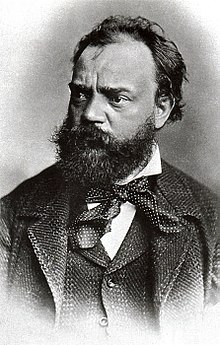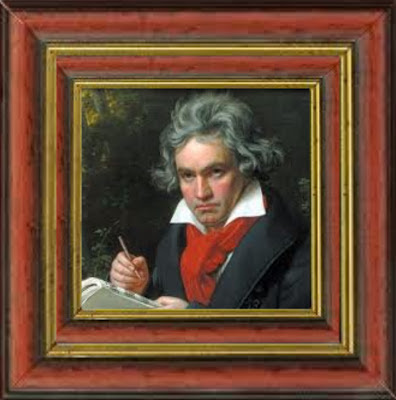 The French poet Armand Renaud was associated with the Parnassian Poets movement in France (although the movement was not restricted to France) that began with an anthology of poems byvarious French poets that was published in 1866. The movement was in reaction to Romanticism with the emphasis on craftsmanship and a tightening up of form. The subject matter was often classical and exotic subjects, but as with any movement or school of artistic endeavors, the Parnassian poets shared a common artistic attitude rather than a rigid set of rules.
The French poet Armand Renaud was associated with the Parnassian Poets movement in France (although the movement was not restricted to France) that began with an anthology of poems byvarious French poets that was published in 1866. The movement was in reaction to Romanticism with the emphasis on craftsmanship and a tightening up of form. The subject matter was often classical and exotic subjects, but as with any movement or school of artistic endeavors, the Parnassian poets shared a common artistic attitude rather than a rigid set of rules.Camille Saint-Saëns used six poems from Renaud's Les Nuits Persanes (Persian Nights) and set them to music in 1870. Saint-Saëns was a man of letters as well as a musician, so he was well acquainted with the Parnassian movement. Saint-Saëns had a very wide interest in different historical and cultural traditions and throughout his career there is a peppering of music that was influenced by many different traditions. At the time Saint-Saëns composed these songs, he was 35 years old and an advocate of the new music of Liszt and Wagner. He was quite influential in French music in his early years, but he grew more and more conservative as he aged.
The songs in this set are well written and showcase Saint-Saëns' melodic talent. He did not use any authentic Persian themes, but he did try to create an exotic feeling to them. While all six are fine songs, the exotic influence can be difficult to hear.
1) La Brise (The Breeze)
This song is perhaps the most obviously Persian influenced in the set as the piano plays a dance rhythm. The first part of this song is in the Dorian mode in E, which also gives it an exotic flavor. Halfway through the music switched to E major and ends in that key.
Like kid goats bitten by a horsefly
Like kid goats bitten by a horsefly
The beautiful girls of Zaboulistan dance.
Their nails are tinted a light pink;
No one can see them, apart from the sultan.
In the hands of each a sistrum sounds;
The turbaned eunuch stands with saber in hand.
But at the pale river where the lily lies sleeping,
The breeze grows like a pirate
that is going to steal their hearts and lips
under the jealous man’s eyes, despite the law.
O dreamer, be proud! The breeze has taken
your love poems for his talisman!2) La Splendeur Vide (The Empty Splendor)
A beautiful song that modulates to different keys to good effect.
In my soul I have built
A wonderful palace,
full of the smells of cinnamon,
Sapphire, Amber, Emerald
Cover the pillars;
Quietly, there strides
familiar lions.
In the ivory cups,
on the deep pile carpets,
groups of Monarchs
are drinking white wine.
Isolated as an island,
the walls are steep,
and plunge into
a lake of silver.
Everything is motionless,
yet everything grows
and spreads like an oil stain
that deepens and shimmers.
But two things that delight
me are lacking:
There is not a sound, and
No color.
Oh! for a sound of lyre,
Oh! for the slightest color,
I would leave porphyry,
Fine pearls, and gold!
But the one that gives
cruel and soft love,
my crown forbids me
of harmony and color;
And the more everything shines and
everything becomes vast and nice,
I feel increased pain,
And the more I become a tomb.
3) La Solitaire (The Solitary One)
The piano imitates the object of the singer's affections as he rides a horse.
O proud young man, o killer of gazelles,
O proud young man, o killer of gazelles,
Pale rider in light velvet,
On your horse whose hoofs have wings
Take me upwards with your love.
I have very often at night, on my terrace,
Shed my tears while holding you close.
Wasted effort! It is your shadow I embrace,
And my sobs, you do not hear them.
The sky made me warm and beautiful,
My soft lips are as a bright red fruit;
I have a song in my voice.
A ray of sun in my hair.
But locked and covered with veils
In a palace, I die far from the true good.
Why flowers and why stars,
If my heart beats and if you do not know it?
My beloved, your weapons are terrible,
Your long gun, spear, your dagger,
And most of all, your eyes dark charms
Piercing a heart with a glance.
O proud young man, o gazelle killer,
My fate is like their fate
On your horse whose feet have wings,
Include my sad heart to the bloody spoils.
4) Sabre en main (Saber In Hand)
The poem conveys the blood-thirsty wishes of the conqueror. While the accompaniment is appropriate enough, it doesn't convey an exotic atmosphere very much.
I have bridled my horse
I have bridled my horse
And put on his saddle of gold.
Through this barren world
We'll take flight.
My heart is cool, my gaze steady,
I love nothing and I fear nothing.
My sword grieves when in its sheath:
When drawn it strikes true!
With the turban wound about my head
And the white cloak on my back,
I wish to set out for the party
Where death screams and dances.
Where towns are put to the torch
While the people sleep at night,
Where the vile rabble think
We are glorious because we are strong.
I wish that kings, when they hear my name,
Would hold their head in their hands,
And that my saber would remove the brands
And the yokes of servitude.
I wish for the swarm of my tents,
My horses with flowing manes,
My bright banners
My pikes, my drums.
Without number, like a swarm
Of flies in summer,
So that the universe squirms and is
aware of how little it is worth!5) Au cimetière (At The Cemetery)
As we sit on this white tomb
Let us open our hearts!
As night falls,
Marble’s spell conquers all.
As we murmur to each other,
The dead vibrate;
We shall pluck corollas
From the Sahara.
If he had, before his last hour,
The love of someone,
He will think of the past,
smell the fragrance and cry.
If he lived, without wanting
To share his heart,
He will say: I lost my life,
Without having loved.
My dear, you shall jingle
Your gold ornaments,
So that desire takes wing
When birds fall asleep.
And without worrying,
For we only die in the end,
We say: Today roses,
Tomorrow cypress!6) Tournoiement: Songe d'opium (Twirling: An Opium Song)
Saint-Saëns was a virtuoso on the piano and he kept up his technique his entire life. He was known to have a very clean and brilliant technique capable of very fleet and nimble playing which is reflected in the accompaniment to this opium-induced vision.
Without a pause,
Without a pause,
On the tip of my big toe
I spin, I spin, I spin,
Like a dead leaf.
As at the moment one dies,
Earth, ocean, space,
Pass before my eyes,
Throwing out a glow.
As I spin around and around,
I go faster
Without pleasure as without anger,
Shivering, despite my sweat.
In the dens filled with foaming waves,
On inaccessible rocks,
I spin, I spin, I spin.
Without the slightest concern.
In forests, on the shores;
Among beasts
And their enemies,
Soldiers who go sword in hand,
Amid the slave markets,
The lands full of volcano lava,
With the Moguls and the Slavs,
I will not stop spinning.
Subject to the laws that ever govern,
The laws that the sun obeys,
I spin, I spin, I spin.
My feet are off the ground.
I go up to the night sky,
Before the silent moon,
In front of Jupiter and Saturn
I go with a hiss,
And I cross Capricorn
And I am in the abyss, the gloomy abyss,
The total and boundless night.















